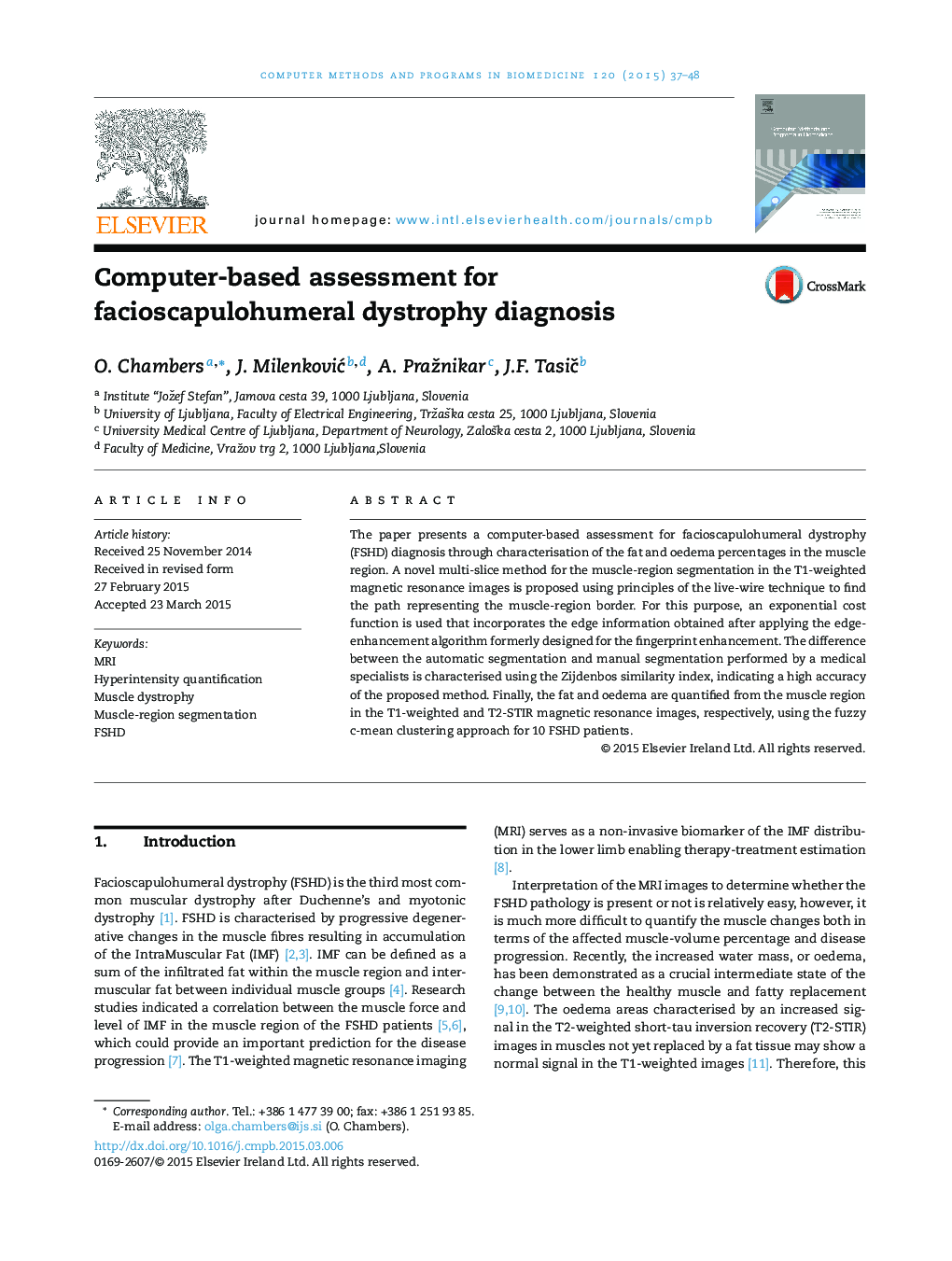| Article ID | Journal | Published Year | Pages | File Type |
|---|---|---|---|---|
| 469420 | Computer Methods and Programs in Biomedicine | 2015 | 12 Pages |
•A novel method for lower-limb muscle segmentation is proposed.•The proposed method is insensitive to the muscle fat infiltration and shape variation.•Segmentation is based on the shortest path detection between anatomical structures.•The proposed method does not require training set.
The paper presents a computer-based assessment for facioscapulohumeral dystrophy (FSHD) diagnosis through characterisation of the fat and oedema percentages in the muscle region. A novel multi-slice method for the muscle-region segmentation in the T1-weighted magnetic resonance images is proposed using principles of the live-wire technique to find the path representing the muscle-region border. For this purpose, an exponential cost function is used that incorporates the edge information obtained after applying the edge-enhancement algorithm formerly designed for the fingerprint enhancement. The difference between the automatic segmentation and manual segmentation performed by a medical specialists is characterised using the Zijdenbos similarity index, indicating a high accuracy of the proposed method. Finally, the fat and oedema are quantified from the muscle region in the T1-weighted and T2-STIR magnetic resonance images, respectively, using the fuzzy c-mean clustering approach for 10 FSHD patients.
